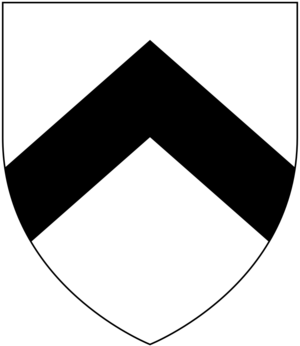Henry Trelawny facts for kids
Henry Trelawny (born around 1658 – died January 8, 1702) was an important officer in the British Army. He came from Cornwall in England. He was also a Member of Parliament, which means he helped make laws for the country. On top of that, he was the Vice-Admiral of South Cornwall, a role that involved managing naval affairs in that area.
Contents
Family Background
Henry Trelawny was the youngest of seven sons. His father was Sir Jonathan Trelawny, 2nd Baronet, who lived at Trelawny in Cornwall. His mother was Mary Seymour.
Henry's family had some very famous relatives. His great-grand-uncle was Edward Seymour, 1st Duke of Somerset, who was a powerful leader in England long ago. Even more famously, his great-grand-aunt was Queen Jane Seymour, who was the third wife of King Henry VIII.
Military and Political Life
Henry Trelawny began his military career in 1678 as a lieutenant. Later, he became a captain in the 2nd Tangier Regiment, which was led by his brother, Charles Trelawny.
In 1683, he became a "freeman" of Portsmouth, and in 1685, of East Looe. This meant he had special rights in those towns. In 1685, he was elected to Parliament for West Looe. He was a member of the Tory party. His older brother, Sir Jonathan Trelawny, 3rd Baronet, was a famous bishop. This brother is well-known for his part in the events leading up to the Glorious Revolution, which is even mentioned in a Cornish song called The Song of the Western Men.
The Glorious Revolution
During the Glorious Revolution, a big change in English history, Henry and his brother Charles decided to support William of Orange. Many other officers and soldiers joined them. After this, both Henry and Charles were elected to the Convention Parliament for East Looe. They continued to serve as Tories.
Later Career
Henry and Charles were re-elected to Parliament for East Looe in 1690. They stayed in Parliament until 1698. In 1692, Henry took over as colonel of his regiment when his brother Charles stepped down. Henry then went with his regiment to fight in Flanders (modern-day Belgium).
He was away from Parliament in 1693 while fighting in Flanders, where his regiment took part in the Battle of Landen. In November 1693, Henry was made Vice-Admiral of South Cornwall. In this role, he worked hard to find new recruits for the navy.
Henry Trelawny was promoted to brigadier-general in 1696. He continued to fight in Flanders in 1696 and 1697. In 1698, he and Charles were again elected for East Looe. Henry later went on half-pay in March 1700, meaning he received half his salary without active duties.
In February 1701, he was elected to Parliament for Plymouth. He was also made a Justice of the Peace for Devon. Henry Trelawny passed away on January 8, 1702, and a large funeral was held for him in Plymouth.
Family and Children
Henry Trelawny was married two times.
- His first marriage was on January 8, 1690, to Rebecca Hals (1661-1699). She inherited land in Devon. Henry and Rebecca had five children:
- Sir Harry Trelawny, 5th Baronet (1687–1762), who became an important aide to the Duke of Marlborough and also served in Parliament.
- Mary Trelawny (born 1688), who married Thomas Brereton.
- Ann Trelawny (born 1689 – died 1701).
- Elizabeth Trelawny (born 1692).
- Captain William Trelawny (born 1696), who married Mary Bisset. They had four sons:
- Charles Trelawny, who died without children.
- Sir William Trelawny, 6th Baronet (around 1722–1772).
- Lt-Gen. Harry Trelawny (1725–1800).
- Thomas Trelawny (died 1809).
- His second marriage was on March 26, 1701, to Mary Trevill. She was the widow of Thomas Stawell. Henry and Mary did not have any children together.


